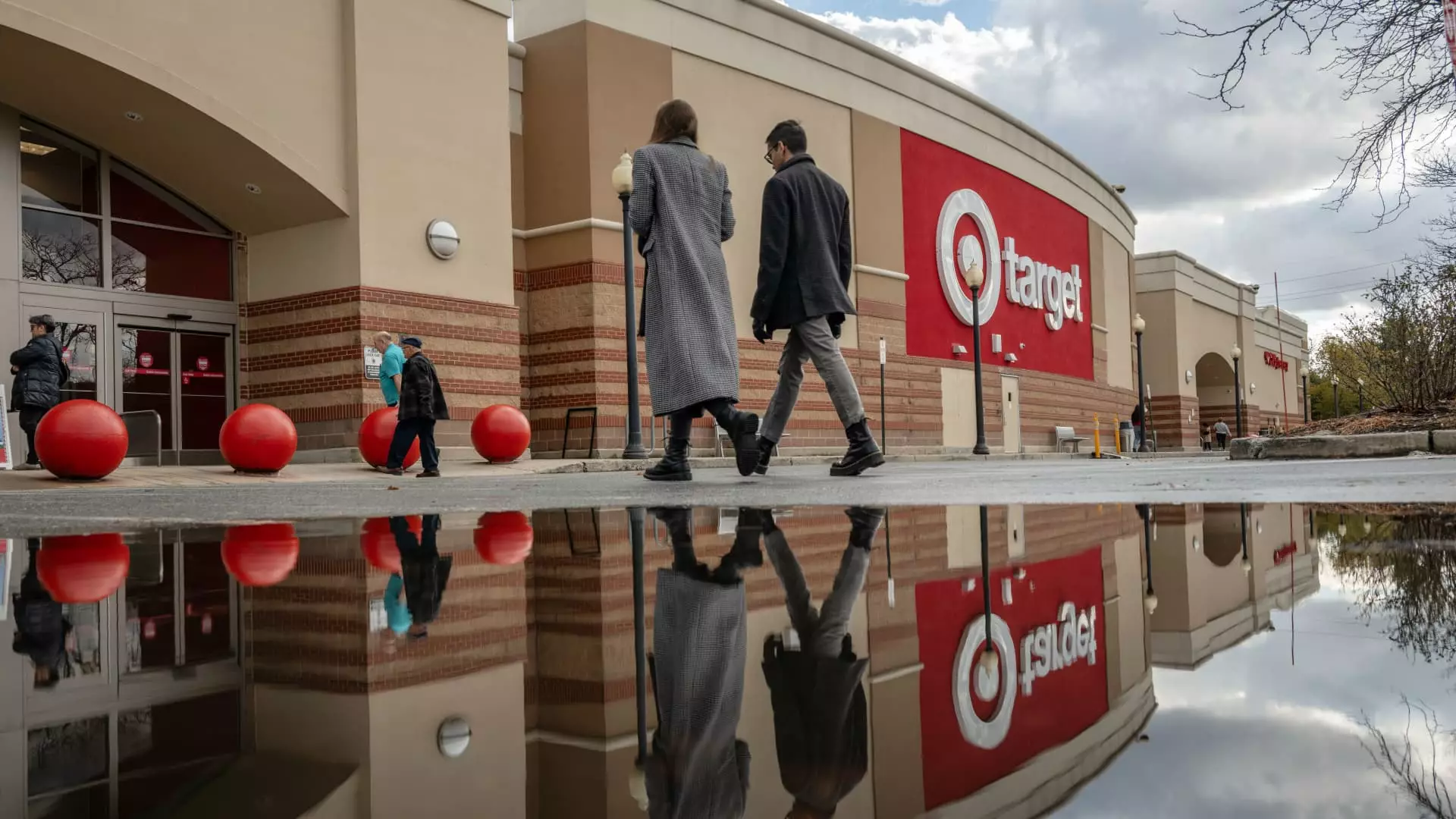The holiday season serves as a critical juncture for retailers, presenting an opportunity to entice consumers into spending on gifts, attire, and other festive essentials. However, the landscape of retail is increasingly defined by a sharp contrast between thriving brands and those struggling to meet consumer demands. As notable retailers release their third-quarter earnings reports, a telling gap emerges that underscores the complexities of current consumer behavior in an altered economic environment.
The Disparity in Sales Performance
Recent earnings reports reveal a disturbing trend among major retailers, illustrating a dichotomy in sales performance. Companies like Target, Kohl’s, and Best Buy are struggling, suffering from sales figures that fell short of expectations despite attempts to draw consumers with early holiday promotions. Conversely, Walmart and companies such as Dick’s Sporting Goods and Abercrombie & Fitch recorded impressive sales increases. This stark contrast can be partially attributed to changing shopping habits shaped by prolonged inflation, which has forced consumers into a more selective mode when it comes to spending.
Neil Saunders, managing director of GlobalData Retail, noted a notable shift in consumer spending patterns, emphasizing the tendency for shoppers to prioritize utility over abundance. “Before, consumers might buy multiple items; now they’re more likely to purchase only the essentials,” he stated. This indicates that shoppers are actively discerning where to spend their funds and, unfortunately for some brands, this may lead to negative decisions regarding which retailers to continue supporting.
According to the National Retail Federation (NRF), holiday spending in the upcoming months is anticipated to rise—yet modestly, estimated at an increase of 2.5% to 3.5% over the previous year, reaching roughly between $979.5 billion and $989 billion. This uptick, while positive, is markedly less vigorous than the 3.9% growth seen last season. The NRF report, however, does exclude sales from automobile dealers, gasoline stations, and restaurants, which suggests that the figures primarily reflect discretionary shopping behavior likely affected by broader economic concerns.
This cautious outlook is echoed in the varying forecasts many retailers have provided. For instance, Abercrombie & Fitch and Dick’s Sporting Goods both expressed optimism regarding the holiday shopping period, with leaders at Abercrombie highlighting an early surge in consumer interest. In stark contrast, Nordstrom and Walmart approached forecasts with prudence; Nordstrom’s CEO revealed a slowdown in consumer activity in late October, prompting a conservative sales prediction, while Walmart’s leadership acknowledged cautious consumer sentiment despite raising sales forecasts.
As consumer preferences evolve, the importance of value becomes increasingly clear. Shoppers are less inclined to spend on luxuries or novelty gifts that do not serve a practical purpose. The shift toward experiential gifting reflects a deeper yearning for meaningful, useful gifts rather than mere trinkets. Insights from GlobalData’s Saunders indicate that the trend favors retailers who can provide items that are perceived as essential or beneficial, rather than superfluous purchases.
Retail giants like Target have responded by focusing on marketing campaigns that emphasize relevance, with unique collaborations alongside popular films and artists aimed at creating hype around their product offerings. However, even with innovative strategies, an overarching question remains: will these efforts draw consumers away from competitors and into their stores?
Another layer of complexity this holiday season involves inventory management. Some retailers may find themselves encumbered by excessive stock or miscalculated product assortments that do not align with consumer demand. For instance, Kohls’ substantial inventory of clothing and household appliances may struggle to entice shoppers who are prioritizing other categories. Retail experts caution that without substantial foot traffic, even attractive promotions and gift offerings may not suffice to clear shelves.
Marshal Cohen from market research firm Circana emphasized that the holiday season necessitates not just lower prices—retailers must also convey a sense of value that resonates with customers. This sentiment reflects an overarching reality that retailers are not just vying for sales but attempting to craft a narrative that aligns their products with meaningful consumer experiences.
The 2023 holiday season poses unique challenges and opportunities for retailers. The divergence in sales performances points to a changing consumer base driven by economic factors and evolving preferences towards value and utility. As retailers mobilize to capture consumer attention—and wallets—they must be prepared to adapt to a climate that prioritizes experienced-based purchases over impulsive spending. With significant room for fluctuations in demand, the ability of retailers to pivot quickly, manage inventory astutely, and offer meaningful engagement will ultimately determine their success or failure this holiday season.


Leave a Reply